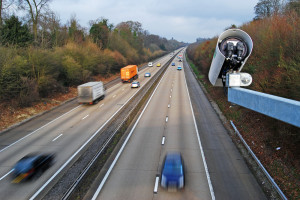Sioux City using traffic cameras to fund police and fire pensions

By Paul Brennan | Iowa Watchdog
DES MOINES, Iowa — Exactly what Sioux City‘s automated traffic cameras have done to improve public safety is debatable, but the more than $1 million they’ve raised to fatten police and firefighter pensions isn’t.
Now new regulations from the Iowa Department of Transportation curbing use of the cameras on state highways and interstates threaten a revenue stream the city has been using to cover gaps in its operating budget.
Sioux City is considering suing IDOT in hopes the courts might invalidate the new regulations.
Seven of Sioux City’s 11 red light cameras are located on state highways. The city also has two mobile speed cameras on Interstate 29.
In fiscal year 2013, the city earned $536,000 from its red light cameras. The I-29 speed camera generated $4.5 million for Sioux City during the same period.
TRAFFIC CAMERAS AND PUBLIC PENSIONS: Sioux City has been using revenue from it traffic cameras to funding pension for police and firefighters. New state regulations may dry up that money stream.
According to Sioux City Councilman Keith Radig, at least $1 million of the city’s traffic camera money has gone to the Municipal Fire and Police Retirement System of Iowa.
Radig has been the only Sioux City official willing to publicly criticize the city’s dependence on traffic camera money.
“I always thought it should have been considered one-time money, because the state could eventually take it away,” Radig told Iowa Watchdog. “It should have been used for capital expenses — preferable for safety projects — since the cameras are supposed to be used to improve safety.”
He’s equally critical of the pension burdens the state has placed on the city.
Although MFPRSI, which covers the police and firefighters of Iowa’s 49 largest cities, is funded by those cities, the state Legislature controls it. Only that body can change the way the retirement system is run, the benefits it pays and the mandates it imposes on cities.
Because of the way laws regarding state pensions are written, changes to MFPRSI and the even larger Iowa Public Employees Retirement System can only be made in the second year of a legislative session.
Since that means any change will have to be voted on during an election year, it provide a powerful incentive for lawmakers not to do more than modestly tinker with the systems.
Although there is a broad consensus the state’s retirement systems are in need of reform — MFPRSI had an unfunded liability of $657 million at the end of the last fiscal year, according to the most generous interpretation of its finances — there’s no serious movement for reform this year.
Prospects for overturning the new IDOT regulations are slightly better. A House bill that would restore control over traffic cameras on highways to local officials has been endorsed by the House Transportation Committee.
The bill’s ultimate fate is less certain, especially since Gov. Terry Branstad is in favor of IDOT’s regulations.
If all else fails, there’s talk of moving the traffic cameras to city streets not under IDOT jurisdiction.
The cameras, after all, are mobile, but the city’s MFPRSI obligations aren’t going anywhere.
“They’re only going to increase,” Radig said.
Contact Paul Brennan at pbrennan@watchdog.org
The post Sioux City using traffic cameras to fund police and fire pensions appeared first on Watchdog.org.







